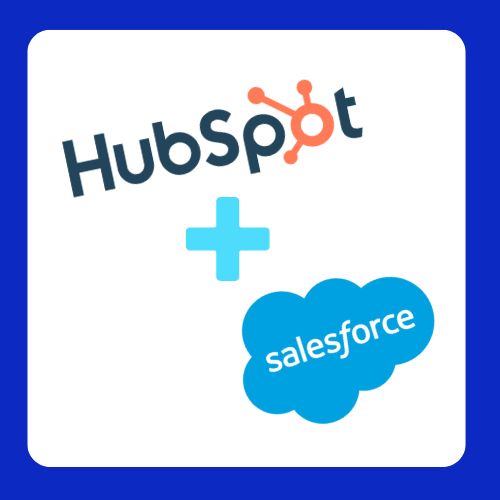How to Build Dynamic Groups in HubSpot

In the realm of customer relationship management (CRM), the ability to segment your contacts dynamically can significantly enhance your marketing and sales strategies.
HubSpot's dynamic groups, also known as active lists, offer a powerful way to automatically update your contact lists based on specific criteria. This functionality ensures that your marketing efforts are always targeted and relevant. Here’s a detailed guide on how to build dynamic groups in HubSpot.
What are Dynamic Groups?
Dynamic groups in HubSpot, or active lists, are contact lists that automatically update based on set criteria. Unlike static lists, which are fixed, dynamic groups adjust as new contacts meet the specified conditions or existing contacts no longer meet them. This feature is particularly useful for maintaining up-to-date segments for email marketing, lead nurturing, and other targeted communication efforts.
Benefits of Using Dynamic Groups
- Automated Updates: Dynamic groups automatically update, ensuring your contact lists are always current without manual intervention.
- Targeted Marketing: By segmenting contacts based on specific criteria, you can deliver more personalized and relevant content.
- Improved Efficiency: Automation reduces the time spent on list management, allowing your team to focus on strategic activities.
- Enhanced Data Accuracy: Dynamic groups help maintain clean and accurate data by continuously updating based on real-time contact information.
Steps to Build Dynamic Groups in HubSpot
-
Define Your Segmentation Criteria
Before creating a dynamic group, determine the criteria you want to use for segmentation. This could include demographics, behavior, lifecycle stage, engagement levels, and more. Clearly defining these criteria will ensure that your dynamic group serves its intended purpose effectively.
Example Criteria:
- Contacts who have opened a marketing email in the past 30 days.
- Leads with a lifecycle stage of “Marketing Qualified Lead” (MQL).
- Contacts who have visited your pricing page more than twice.
-
Navigate to the Lists Tool
Log in to your HubSpot account and navigate to the “Contacts” section. From there, select “Lists.” This is where you can create and manage both static and dynamic groups.
Steps:
- Click on “Contacts” in the top navigation bar.
- Select “Lists” from the dropdown menu.
-
Create a New Active List
Once in the Lists tool, create a new list by clicking on the “Create list” button. Choose “Active list” to ensure the group updates dynamically based on your criteria.
Steps:
- Click on “Create list.”
- Select “Active list” as the type of list you want to create.
-
Set Up Your List Criteria
Define the criteria for your dynamic group using HubSpot’s filtering options. You can combine multiple filters to create complex segmentation rules.
Steps:
- Add filters by selecting “AND” or “OR” conditions.
- Choose filter categories such as “Contact properties,” “Company properties,” “Deal properties,” “Form submissions,” “Page views,” and more.
- Specify the conditions for each filter. For example, you might set a filter for contacts who have a “Lifecycle stage” of “Lead” and another for those who have visited the pricing page at least twice.
-
Refine and Test Your Criteria
It’s important to refine and test your criteria to ensure the dynamic group includes the right contacts. HubSpot allows you to see a preview of the contacts who meet the criteria as you build the list.
Tips:
- Use the preview feature to check the contacts being included.
- Adjust filters as needed to fine-tune your segmentation.
- Ensure that the criteria are not too broad or too narrow to achieve your desired segmentation.
-
Name and Save Your List
Once you’re satisfied with the criteria, give your dynamic group a clear and descriptive name. This will help you easily identify the list in the future.
Steps:
- Enter a name for your list in the “List name” field.
- Click on “Save” to create your dynamic group.
-
Utilize Your Dynamic Group
With your dynamic group created, you can now use it in various HubSpot tools. Dynamic groups are particularly useful for targeted email campaigns, lead nurturing workflows, and reporting.
Applications:
- Email Marketing: Send targeted email campaigns to contacts in your dynamic group.
- Workflows: Use the list as an enrollment trigger for automated workflows.
- Reporting: Generate reports based on the contacts in your dynamic group to analyze engagement and performance.
Best Practices for Building Dynamic Groups
- Keep Criteria Simple: While it’s possible to create complex lists, starting with simple criteria can make it easier to manage and understand your dynamic groups.
- Regularly Review Lists: Periodically review your dynamic groups to ensure they continue to meet your business needs and adjust criteria as necessary.
- Leverage Multiple Filters: Use multiple filters to create more precise segments. Combining demographic and behavioral data can lead to highly targeted lists.
- Test and Optimize: Continuously test and optimize your lists to ensure they are performing as expected and delivering the desired results.
- Document Your Segmentation Strategy: Keep a record of the criteria used for each dynamic group. This documentation can be useful for training new team members and maintaining consistency in your segmentation strategy.
Conclusion
Building dynamic groups in HubSpot is a powerful way to ensure your contact lists are always up-to-date and relevant. By following these steps and best practices, you can create highly targeted segments that enhance your marketing and sales efforts. Dynamic groups save time, improve data accuracy, and enable more personalized communication, ultimately driving better engagement and higher conversion rates.
At Set2Close, we specialize in helping businesses optimize their CRM and marketing strategies. As HubSpot’s fastest-growing Platinum Partner, we have the expertise to help you leverage dynamic groups and other advanced features to achieve your revenue goals. Contact us to learn more about how we can support your business in harnessing the full potential of HubSpot.

Make the smart choice—schedule a consultation with us today.
Keep up-to-date with the latest advancements in Sales/Marketing AI and Revenue Operations by following us on LinkedIn, YouTube, and Meta. Subscribe to our newsletter to ensure you never miss out on vital industry insights and the latest news affecting the broader landscape of revenue operations.
Related Articles
How To Create Contact-Based lists in HubSpot
In the dynamic world of marketing, leveraging tools like HubSpot can make all the difference. Whether you're a seasoned pro or a beginner, mastering the art of creating contact-based lists in HubSpot...